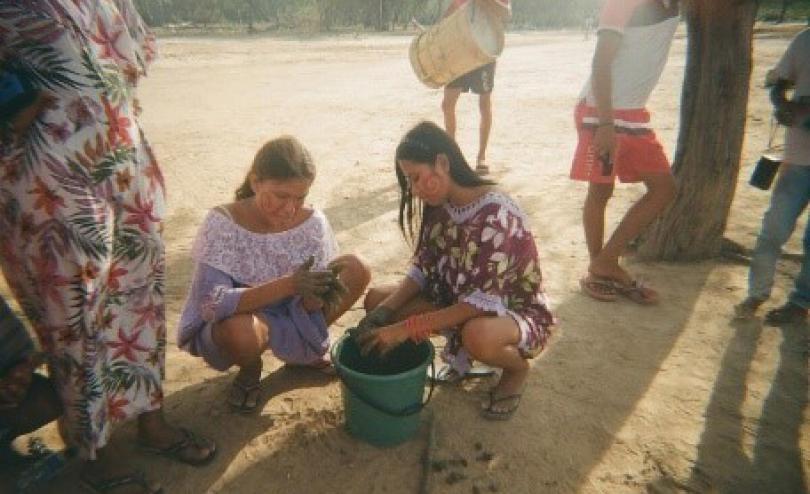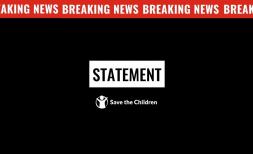Through the Lens of Resilience: Indigenous children in Colombia photograph the climate crisis

Photo by Roberto/Save the Children. Roberto took part in the participatory photo project.
IMAGES HERE:
www.contenthubsavethechildren.org/Package/2O4C2SZMCG_F
VIDEO OF WORKSHOPS:
www.contenthubsavethechildren.org/Package/2O4C2S3E2CRH
ARTWORKS:
www.contenthubsavethechildren.org/Package/2O4C2S3LLBBH
BOGOTA, Friday 8 December – Children from the Wayuu indigenous group in Colombia have documented how the climate crisis is drying up their land, putting food, water and a healthy life further out of reach, in a series of photographs released by Save the Children to mark Children and Youth Day at COP28.
Sony Award winning photographer Angela Ponce delivered a workshop for the children in La Guajira, Colombia, teaching them the fundamentals of photography and providing them with their own film camera for a week to capture their environment, cultural traditions, and daily life. Each child also kept a notebook to document why they have taken their images, making this a truly unique participatory project.
As part of the project, the children also learned to develop their own images relying only on the power of the sun, through the process of “Cyanotype” printing, to symbolise the environmental challenges they face. Each artwork has a distinctive blue hue illustrating the desperate need for water in their community, and the indigenous plants that are vital for their survival.
For centuries, the Wayuu people have lived off the land, but the climate crisis has seen a series of crippling droughts, erratic rainfall, and soaring temperatures meet with high levels of pollution to devastate the environment in their home of La Guajira.
The current El Nino weather pattern is also projected to bring reduced rainfall to the area.
Iveth,16, who took part in the project, said:
“Before we had orchards, it rained, the plants grew. We didn´t water the plants, the rain did. Now there´s no rain, the weather has changed so we can´t sow. The plant´s leaves dry out due to the temperature and die....”
“Here, the Wayuu suffers from the lack of water. It can´t be found, as the weather is changing there aren't seasons anymore."
“I liked when we started to take photos, we learned how to use the camera and how to take the pictures.... I´m taking pictures of where the animals eat and drink water… I would like to take photos of issues like climate change, everything regarding the drought.”
After years of drought, water levels have hit historic lows, and only 3.3% of Wayuu communities have access to clean water[i]. The water that is available is often taken from a “jaguey”, a natural aquifer in the form of a pond which collects rainwater and is shared with livestock. This results in regular occurrences of diarrhoea and other waterborne diseases among children who are forced to drink the water.
Hunger is also looming, with communities struggling to sow crops because of the drought. The mortality rate for malnutrition in children under five years is 7.8 more than the national average[ii]. La Guajira is also the poorest region in the country, where over 60% of the population live in poverty. La Guajira is also the fourth poorest region in the country, where 58% of the population live in poverty.
Due to climate change, things are set to get worse as temperatures rise. Earlier this year, the Colombian government declaring an economic and social emergency in La Guajira[iii].
Ismael, 14 said: “It hasn´t rained for a long time, and I think that we need the water and the animals do too. We drink the water from the cattle pond.”
In his photo he took of the sun, he said; “I took a picture of the sun because it was too hot and that is harmful for the trees, and it makes us thirsty. The heat makes us thirsty, and the cattle pond is far away, as I told you, sometimes it’s empty and we need something to drink.
Sony Award winning photographer Angela Ponce, whose work focuses on the impact of the climate crisis on indigenous groups said:
“The climate crisis hits the most vulnerable the hardest, and it's heartbreaking to see children bearing the brunt of a problem they didn't create. Handing the Wayuu children their own cameras gives them a voice to show the world the challenges they face. Their photos tell a powerful story of strength and resilience, highlighting the urgent need for all of us to protect our planet and support those most affected”.
Felipe Cortes, Head of Advocacy and Communications at Save the Children in Colombia said:
“Wayuu people have relied on their land to grow crops for many generations – but for years, they have struggled due to increasing drought, erratic rainfall and extremely high temperatures. Just one in ten Wayuu children has access to clean drinking water. In La Guajira, the official death rate for children from malnutrition is six times that of the national average.
“The climate crisis, caused by adults, is putting nutritious food further and further out of reach – and harming children first and worst. Wayuu children, like others across the world, will be affected by decisions made at COP28 – and their rights and needs must be at the forefront of these decisions.”
The children involved in the project are all part of a Save the Children programme with the Wayuu community, supporting them to address issues around climate change, deforestation and waste management. This programme is community-led and encourages intergenerational dialogue to help the Wayuu people preserve their traditional way of life while building resilience to the impacts of climate change.
In Colombia and across the world, Save the Children supports children to get their voices heard on issues like climate change. At COP28, the child rights organisation is calling on governments and all relevant organisations to recognise children as key agents of change in the climate crisis, and to ensure children have platforms to say what they want on climate policy, financing and more.
Save the Children is also calling for progress towards an ambitious new goal on climate finance that moves far beyond the pledge to mobilise at least $100bn annually with a particular focus on reaching children impacted by inequality and discrimination, such as Wayuu children.
The child rights organisation also called for ambitious and urgent action now to limit warming to a maximum of 1.5°C above pre-industrial levels. Failing to do this will have dramatic consequences for children’s health, safety, and wellbeing.
For more information and media inquiries, please contact:
Emily Wight, Emily.Wight@savethechildren.org
Daphnee Cook, Daphnee.Cook@savethechildren.org
Simon Edmunds at s.edmunds@savethechildren.org.uk or +447515855180.
Our media out of hours (BST) contact is media@savethechildren.org.uk / +44(0)7831 650409
Please also check our Twitter account @Save_GlobalNews for news alerts, quotes, statements and location Vlogs.
IMAGES HERE:
www.contenthubsavethechildren.org/Package/2O4C2SZMCG_F
VIDEO OF WORKSHOPS:
www.contenthubsavethechildren.org/Package/2O4C2S3E2CRH
ARTWORKS:
www.contenthubsavethechildren.org/Package/2O4C2S3LLBBH




